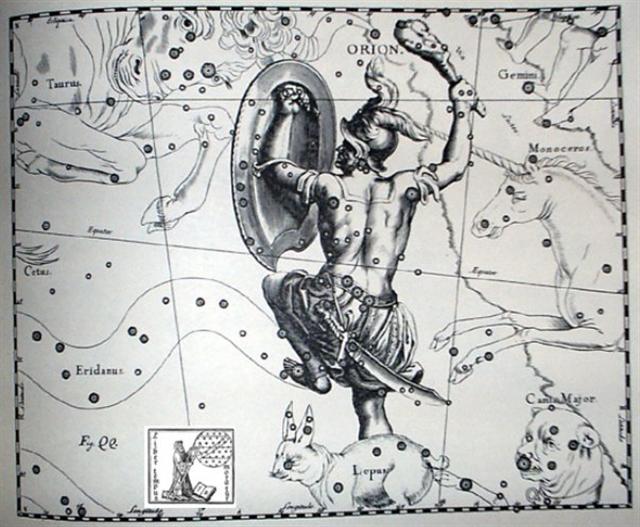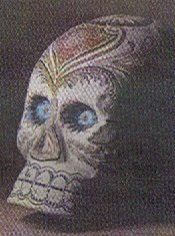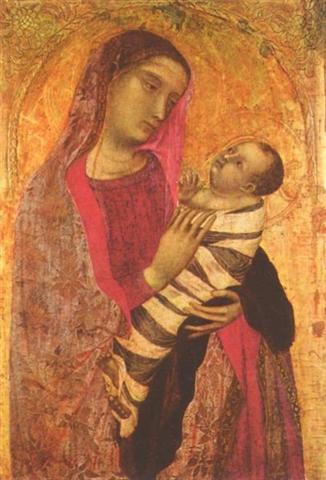Considering the basic facts of time (as we so
far have discovered), there should be signs of
Mercury (116) and of Bharani (121 = 116 + 5),
i.e. signs of
(re)birth. 4 * 29 + 11 * 11 = 8 * 29½ + 1.
|
April 25 (115) |
60 |
June 25 (176) |
5 + 116 |
Oct 25 (298) |
60 |
Dec 25 (359) |
5 + 116 |
|
61 |
2 * 61 |
61 |
2 * 61 |
|
183 |
183 |
|
366 = 2 * 183 = 6 *
61 |
The fused triplet in Ba8-2 could have been
intended to allude to 3 * 116 = 348 = 12 * 29 (=
the number of glyphs on side b on the C tablet).
|
Kua oho ki te nuku honu |
mai tae huri ïa |
ki
te motomotou honu |
 |
 |
 |
|
Ba8-1 (10 * 29½) |
Ba8-2 (296 = 175 + 121) |
Ba8-3 (181 + 116 = 297) |
Each rhomb could then be counted as
348 / 3 = 4 * 29. However, these rhombs are
irregular with the central one greater.
|
JULY 2 (183 = 87 + 96) |
83 |
SEPT 24 (267 = 87 + 180) |
 |
 |
|
Ga4-20 (103 = 87 + 16) |
Ga7-18
(187 = 87 + 100) |
|
Sept 4
(247) |
Nov 27 (331 = 296 + 35) |
|
11h (167.4)
χ Leonis, χ¹ Hydrae (167.1), χ²
Hydrae (167.3)
*167.4 - *41.4 = *126.0 |
HAN = ζ Ophiuchi
(251.0) |
267 (September 24) + 29 (Mercury) = 296
(Ba8-2).
The fused triplets in the G text are smaller
than that in Ba8-2 which possibly might be interpreted
to mean that each rhomb represented
approximately 29 right
ascension days (nights).
3 * 29 + 29 = 87 (→ Betelgeuze) + 29 = 116 (→
Pollux).
|
APRIL 11 |
12 |
4-13 → 14 * 29½ |
4-14→ *41.4 (104)
|
15 |
16 (*26) |
 |
 |
 |
 |
 |
 |
|
Ga1-21 |
Ga1-22 |
Ga1-23 |
Ga1-24 |
Ga1-25 |
Ga1-26 |
|
ο Aurigae (85.8), γ Leporis
(85.9)
YANG
MUN (α Lupi)
|
μ
Columbae,
SAIPH
(Sword) =
κ
Orionis
(86.5),
τ
Aurigae,
ζ
Leporis (86.6) |
υ Aurigae (87.1), ν Aurigae
(87.2),
WEZN (Weight) = β Columbae,
δ Leporis (87.7),
TZE (Son) = λ Columbae
(87.9) |
Ardra-6 (The Moist One) /
ANA-VARU-8 (Pillar to sit by)
χ¹
Orionis,
ξ
Aurigae (88.1),
BETELGEUZE
=
α
Orionis
(88.3),
ξ
Columbae (88.5),
σ
Columbae (88.7) |
η
Leporis (89.0),
PRAJA-PĀTI (Lord of Created
Beings) =
δ
Aurigae,
MENKALINAN (Shoulder of the
Rein-holder) = β Aurigae,
MAHASHIM (Wrist) = θ Aurigae,
and
γ
Columbae (89.3),
π
Aurigae (89.4),
η
Columbae (89.7)
*48.0 = *89.4 - *41.4 |
μ Orionis (90.3), χ² Orionis
(90.5) |
|
June 14 (165) |
15 |
16 |
17 (168) |
18 |
19 |
|
°June 10 (161) |
11 |
12 |
13 (164) |
14 |
15 (*86) |
|
'May 18 (*58) |
19 |
20 (140) |
21 |
22 |
23 (*63 = 9 * 7) |
|
"May 4 (*54) |
5 |
6 |
7 (127) |
8 |
9 (*49 = 7 * 7) |

...
The earliest depiction that has
been linked to the constellation
of Orion is a prehistoric
(Aurignacian) mammoth ivory
carving found in a cave in the
Ach valley in Germany in 1979.
Archaeologists have estimated it
to have been fashioned
approximately 32,000 to 38,000
years ago ... The artist cut,
smoothed and carved one side (A)
and finely notched the other
side (B) and the edges.
Side A contains the
half-relief of an anthropoidal
figure, either human or a
human-feline hybrid, known as
the 'adorant' because its arms
are raised as if in an act of
worship.
|
Egyptian
jubilation |
 |
Phoenician
he |
 |
Greek
epsilon |
Ε (ε) |
|
Wikipedia points at
the Egyptian gesture
with arms held high
as a Sign of
jubilation, which
may have been the
origin (via
Phoenician he)
of epsilon.

 |
On side B together with
the four edges is a series of
notches that are clearly set in
an intentional pattern. The
edges contain a total of 39
notches in groups of 6, 13, 7
and 13. A further 49 notches on
side B are arranged in
four vertical lines of 13, 10,
12 and 13 respectively plus a
further notch that could be in
either of the middle two lines
... The grouping of the notches
on the plate suggests a
time-related sequence. The total
number of notches (88) not only
coincides with the number of
days in 3 lunations (88.5) but
also approximately with the
number of days when the star
Betelgeuse (α Ori) disappeared
from view each year between its
heliacal set (about 14 days
before the spring equinox around
33,000 BP) and its heliacal rise
(approximately 19 days before
the summer solstice).
Conversely, the nine-month
period when Orion was visible in
the sky approximately matched
the duration of human pregnancy,
and the timing of the heliacal
rise in early summer would have
facilitated a ‘rule of thumb’
whereby, by timing conception
close to the reappearance of the
constellation, it could be
ensured that a birth would take
place after the severe winter
half-year, but leaving enough
time for sufficient nutrition of
the baby before the beginning of
the next winter. There is a
resemblance between the
anthropoid on side A and the
constellation Orion. None of
these factors is convincing when
taken in isolation, because of
the high probability that
apparently significant
structural and numerical
coincidences might have arisen
fortuitously. However, taken
together they suggest that the
anthropoid represented an
asterism equivalent to today’s
constellation of Orion, and that
the ivory plate as a whole
related to a system of time
reckoning linked to the moon and
to human pregnancy. If so, then
ethnographic comparisons would
suggest that the
Geißenklösterle culture
related their ‘anthropoid’
asterism to perceived cycles of
cosmic power and fertility ... |
At the time of the Bull 'the Moist One'
(the 8th star pillar, Ana-varu) would have risen heliacally in APRIL
14 (104) which was 16 right ascension
days after MARCH 29 (88).
And at the time of rongorongo Ana-mua
(Antares, the first star pillar) rose
heliacally in day 329 (November 29),
i.e. 329 - 64 = 265 (SEPTEMBER 22) = 88
+ 6 * 29½.
|
ARIES: |
|
1 |
Ashvini
wife of the Ashvins |
β and γ Arietis
Sheratan and Mesarthim |
Horse's head |
April 17 (107) |
|
2 |
Bharani
the bearer |
35, 39, and 41 Arietis
Musca Borealis |
Yoni, the female organ of
reproduction |
May 1 (121) |
|
TAURUS: |
|
3 |
Krittikā
the nurses of Kārttikeya |
M 45 Tauri
The Pleiades |
Knife or spear |
May 15 (135) |
|
4 |
Rohini
the red one |
α Tauri
Aldebaran |
Cart or chariot, temple, banyan
tree |
May 28 (148) |
|
ORION: |
|
5 |
Mrigashīrsha
the deer's head |
λ, φ¹, and φ² Orionis
Heka |
Stag's head |
June 12 (163) |
|
6 |
Ardra
the moist one |
α Orionis
Betelgeuze |
Teardrop, diamond, a human head |
June 17 (88 + 80) |

Varu.
1. To cut one's hair (te
puoko). 2. To shave. 3. To paint, to
put on make-up: he varu te kiea.
Varu a-roto, to have diarrhoea.
Vanaga. 1. Eight. 2. To shave, to remove
the beard, to shear, to clip, to rasp, a
plane. Varuvaru, to peel, to
remove the bark, to plane, to scrape, to
shear. Churchill.
Varua.
Spirit, soul; sleep, dream.
This is a Tahitian word, but the same
term may have been used in ancient
times. Vanaga. In
Bierbach the accumulated evidence
connected varua with
mummification and how the hair was
removed (varu), the body fluids
drained (varu a-roto) and after a
period of 2 months it was make-up time (he
varu te kiea):
... Embalming is
known and practised with surprising
skill in one particular family of
chiefs. Unlike the Egyptian method, as
described by Herodotus, it is performed
in Samoa exclusively by women. The
viscera being removed and buried, they,
day after day, anoint the body with a
mixture of oil and aromatic juices. To
let the fluids escape, they continue to
puncture the body all over with fine
needles. In
about two months, the process of
desiccation is completed. The hair,
which had been cut and laid aside at the
commencement of the operation, is now
glued carefully on to the scalp by a
resin from the bush. The abdomen is
filled up with folds of native cloth;
the body is wrapped up with folds of the
same material, and laid out on a mat,
leaving the hands, face, and head
exposed ...

|






